Guru Ka Langar is the tradition of serving langar, which was first initiated by Guru Nanak Dev Ji and afterward settled by the third Guru, Sri Guru Amar Dass Ji at Govindwal. Sikhs are exceptionally well known everywhere throughout the world for their bravery, liberality, generosity and their will to serve their society and nation. One example to legitimize all this is the
Langar tradition practiced in Sikhism.
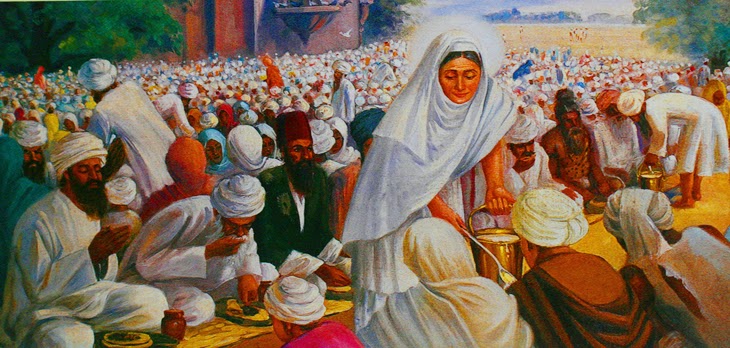
The Sikh Langar tradition practiced before
On the normal days, 75,000 individuals eat a free meal here. Around 12,000 kilos of flour are utilized to make 2, 00,000 rotis for the Langar. More than 100 gas cylinders and 5,000 kilos of firewood are utilized to set up the supper. Everybody is welcome to share the Langar; nobody is turned away.
https://www.youtube.com/watch?v=ZtmNb-KJGC4
The benevolence and liberality of the volunteers at the Golden Temple demonstrates that not only is the delightful temple made of gold, but also the hearts of the devotees who come to worship here. The principle thought behind the idea of Langar is community dining, equality among individuals and the feelings of unity and sharing.

The ultimate Langar at the Golden Temple
Here are
10 facts you must know about the
langar at the Golden Temple, the largest free kitchen all throughout the world-
- The langar at the Golden Temple serves a gigantic number – 75,000 individuals per day! On holidays/religious events, the number frequently rise up till 100,000!
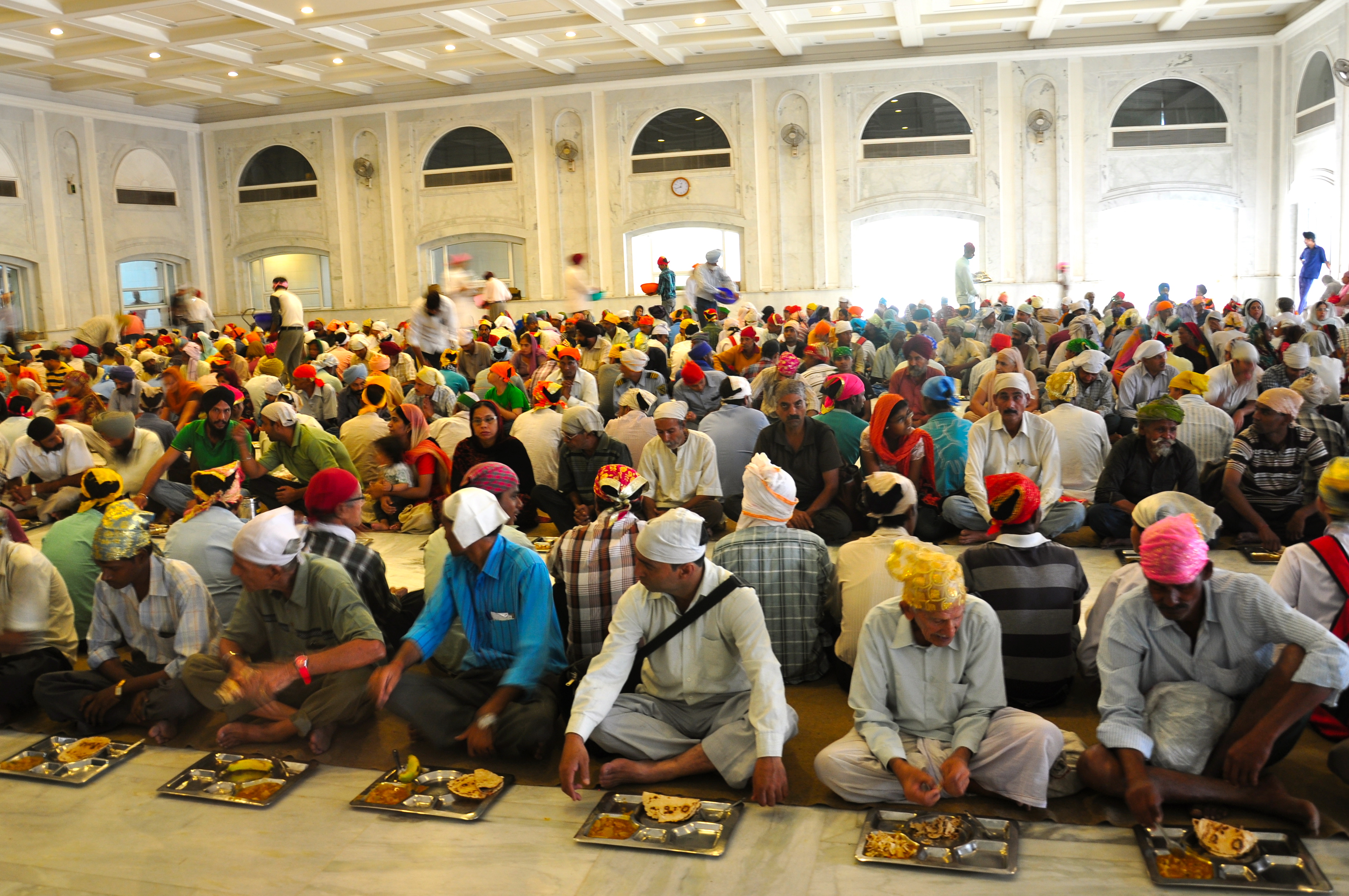
Thousands of individuals sitting together to have the ultimate Langar feast
- The meals in the langar are completely vegetarian and are simple, healthy and nutritious. They, for the most part, comprises of rice, a vegetable dish, rotis (bread), daal (lentils), and lastly kheer (dessert).
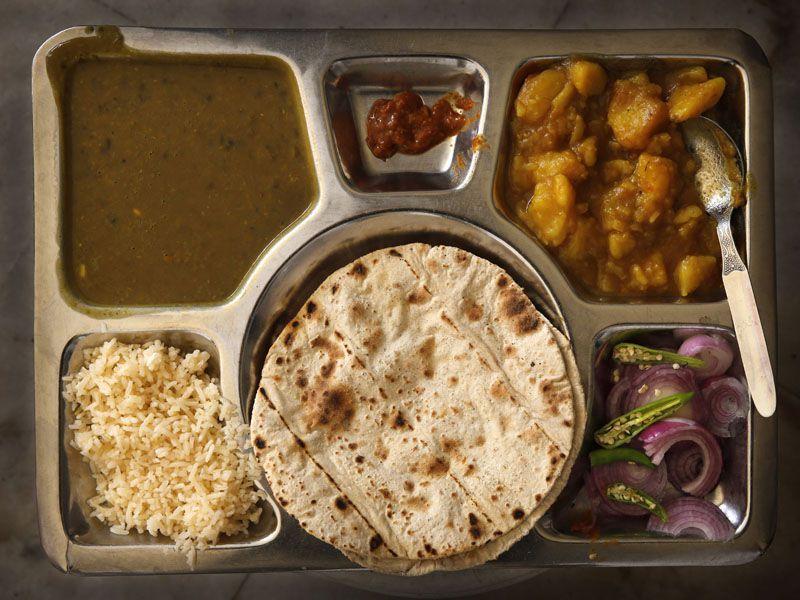
The Langar thali comprising of rice, roti, dal, and a vegetable dish
- Serving these many individuals for quite a while is not a simple undertaking, yet the efficiency and the precision effectiveness of the sewadars (workers) make the wholesome errand totally simple! Generally, 90% of the working staff comprises of volunteers who alongside guarantees that the meal is properly cooked and delivered on time.
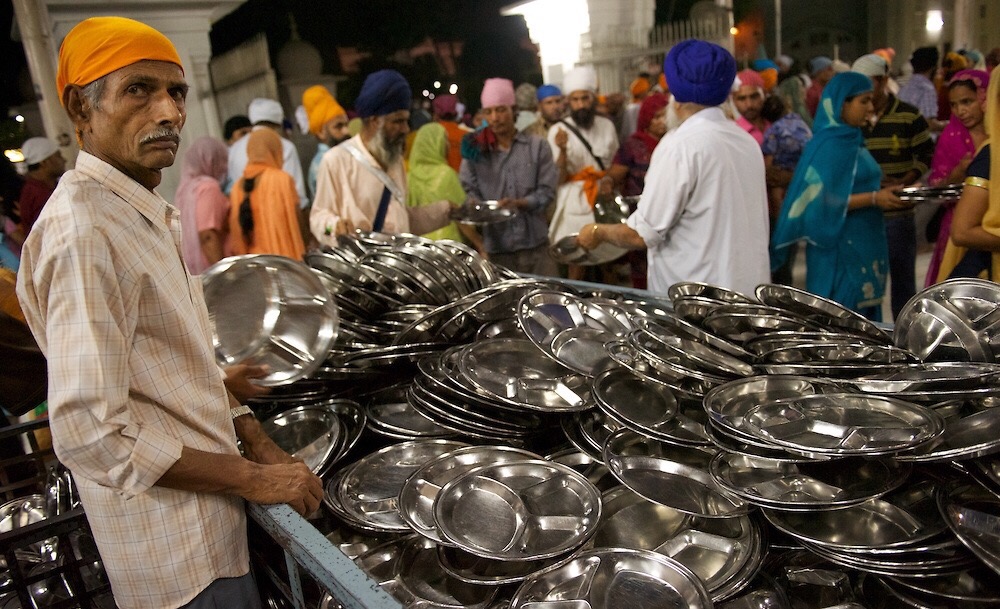
The preparation, cooking, also the washing-up is done by the Volunteers or the Sewadaars
- It comprises of two kitchens in which the food is prepared. They also have a few burners, 11 hot plates (tawa), a few different utensils and also the machines for sieving and kneading dough.
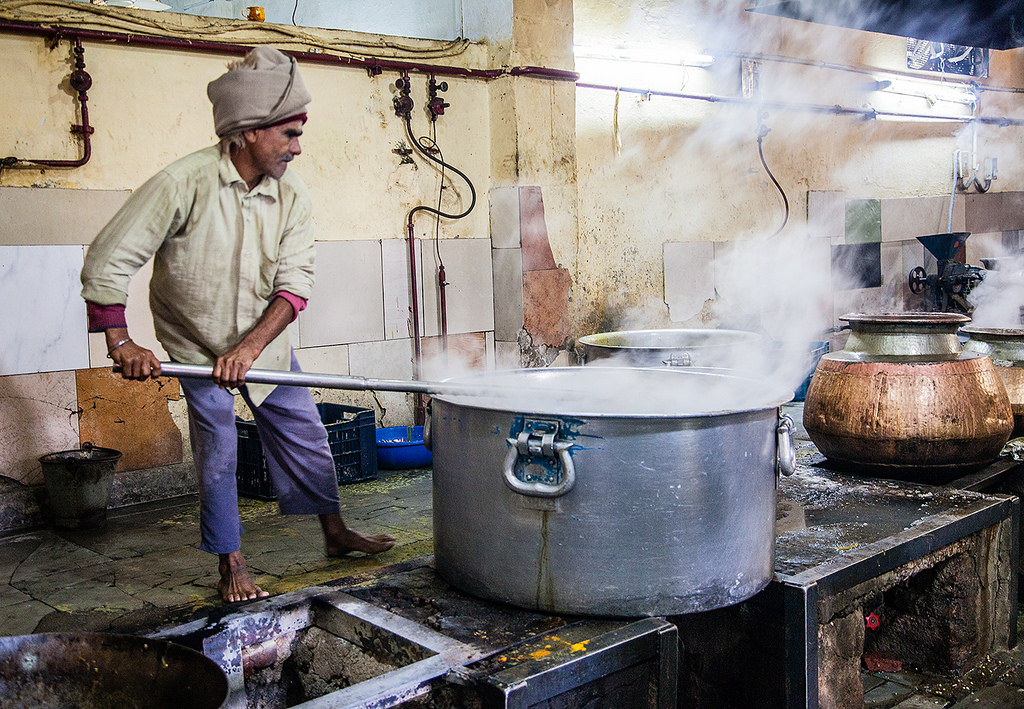
The food is prepared in huge utensils along with large hot plates
- Given the quantities of diners, just imagine the number of food materials required! Around 18 quintals of dal, 7 quintals of milk, 50 quintals of wheat, and 14 quintals of rice are devoured every day in the langar kitchen. They require one hundred gas barrels to cook the whole meal.

The quantities of food for the whole Langar meal
- Ordinary cooking utensils don't suffice for cooking such inconceivable amounts of food. Rather, the langar utilizes extensive vessels that can store as much as 7 quintals of dal or kheer at once!
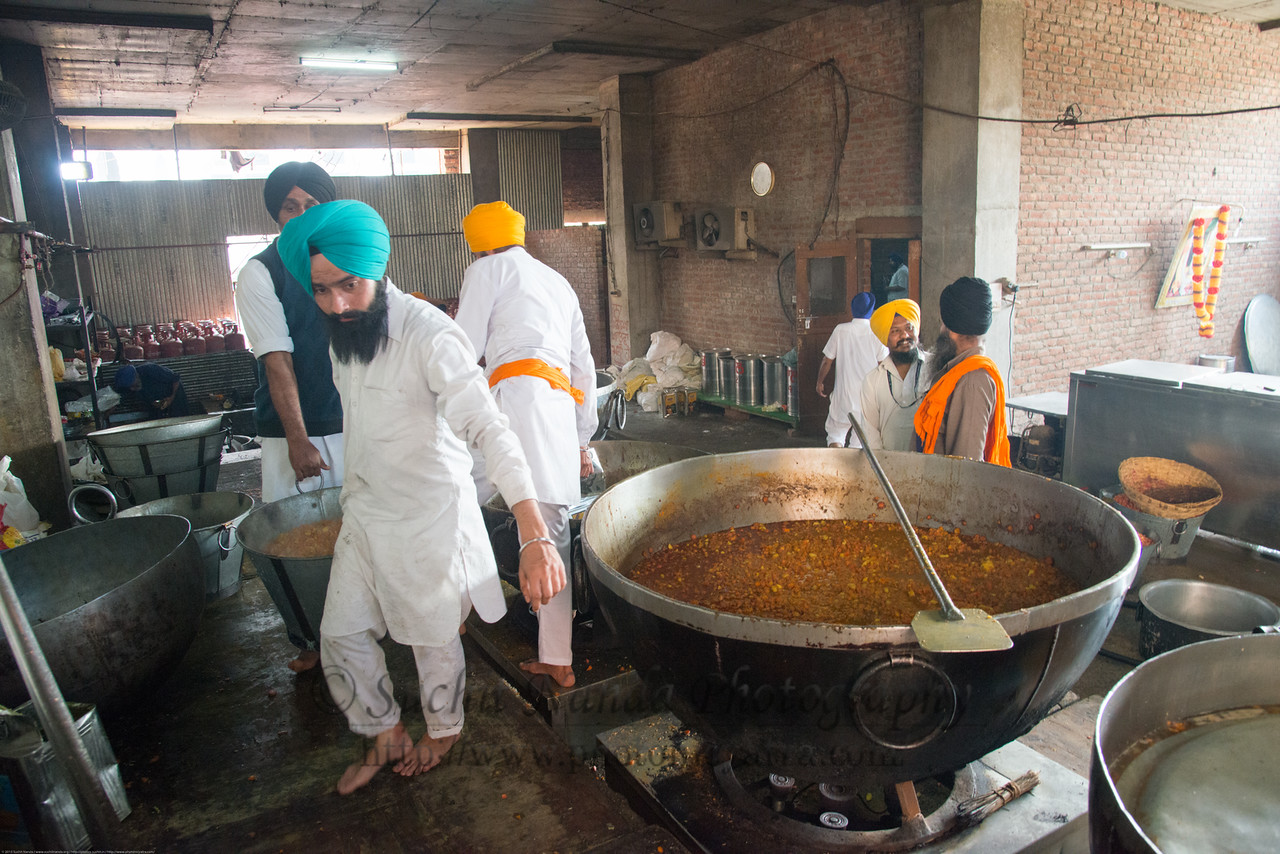
Large vessels for the free langar at the Golden Temple
- Cleanliness is of most extreme significance, both prior and after meals. Used plates are given over to another bunch of volunteers. Not only this, but each plate is also washed 5 times before being utilized again by others.
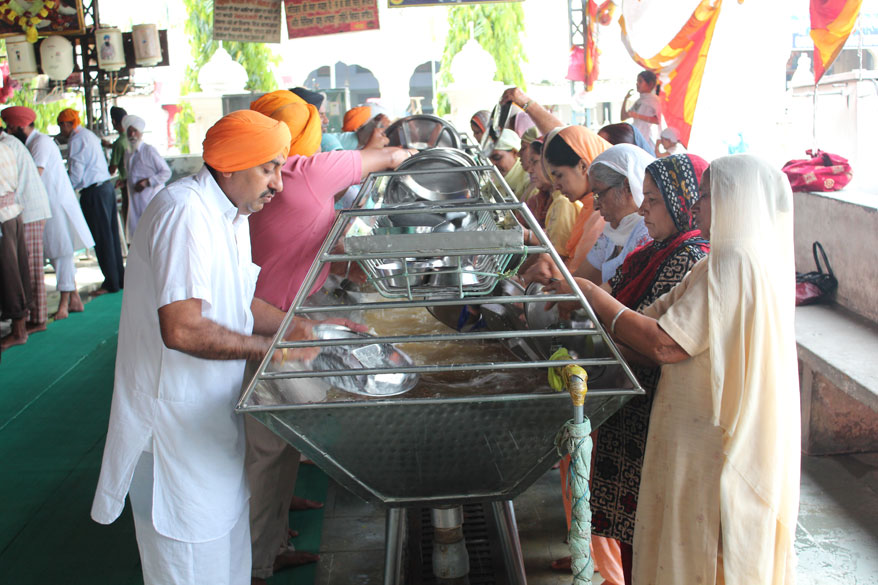
The dirty dishes are washed 5 times before re-using it again
- On religious events and holidays, a roti/chapati making machine is utilized, which can produce 35,000 rotis in only 60 minutes!
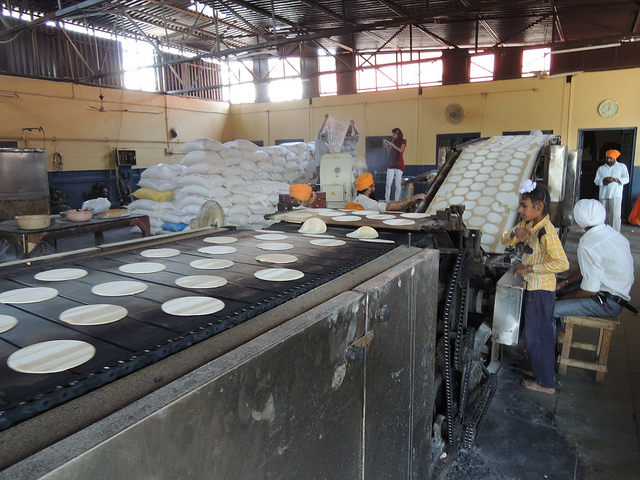
The roti making machine to make the roti faster
- The kitchen comprises of two dining halls, which have a consolidated limit of 6000 individuals. People come and take a seat to eat on the mats lying on the floor, and then they are served with the food by the volunteers there.
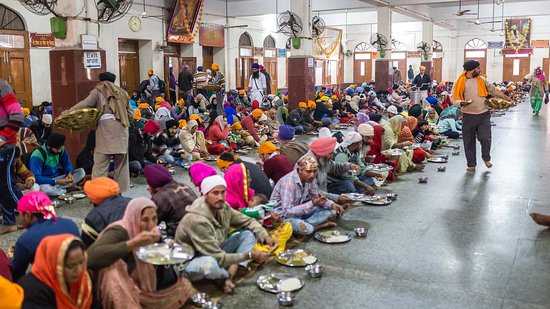
The dining hall for having the Langar meal
- A large portion of the food materials is brought from Delhi, or are purchased locally. The kitchen gets a ton of donations as well, in both cash and kind.
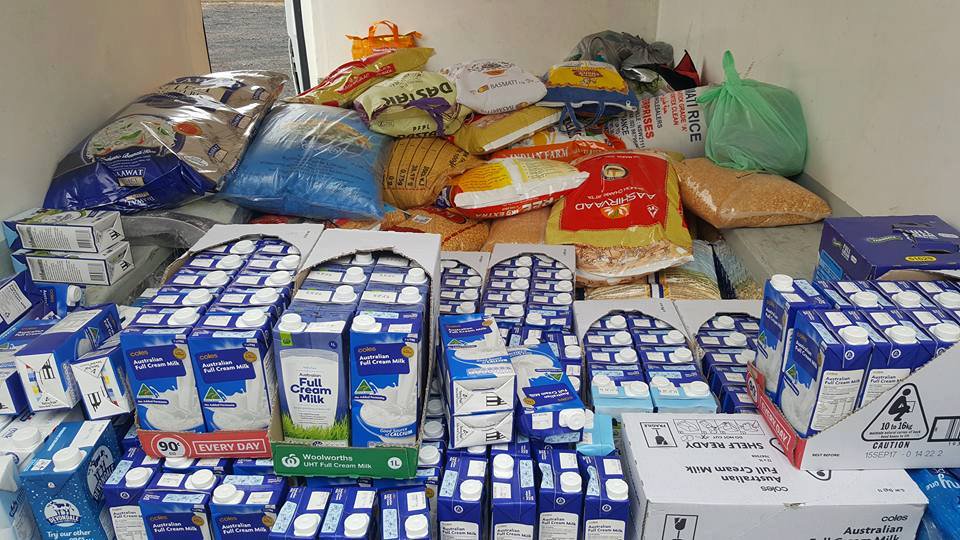
The kitchen getting a ton of donations
When you go to a Gurudwara to have the Langar, the minute you enter the langar hall and sit with individuals from all kinds of different backgrounds and you are served simple, yet top notch food cooked with devotion and love, it will all of a sudden strikes you that these are the small things which we ought to esteem the most in our lives, that is loving, sharing and maintaining peace. Going for an expensive hotel or restaurant does not give that sentiment of unity and fulfillment where a simple feast in a langar hall does!





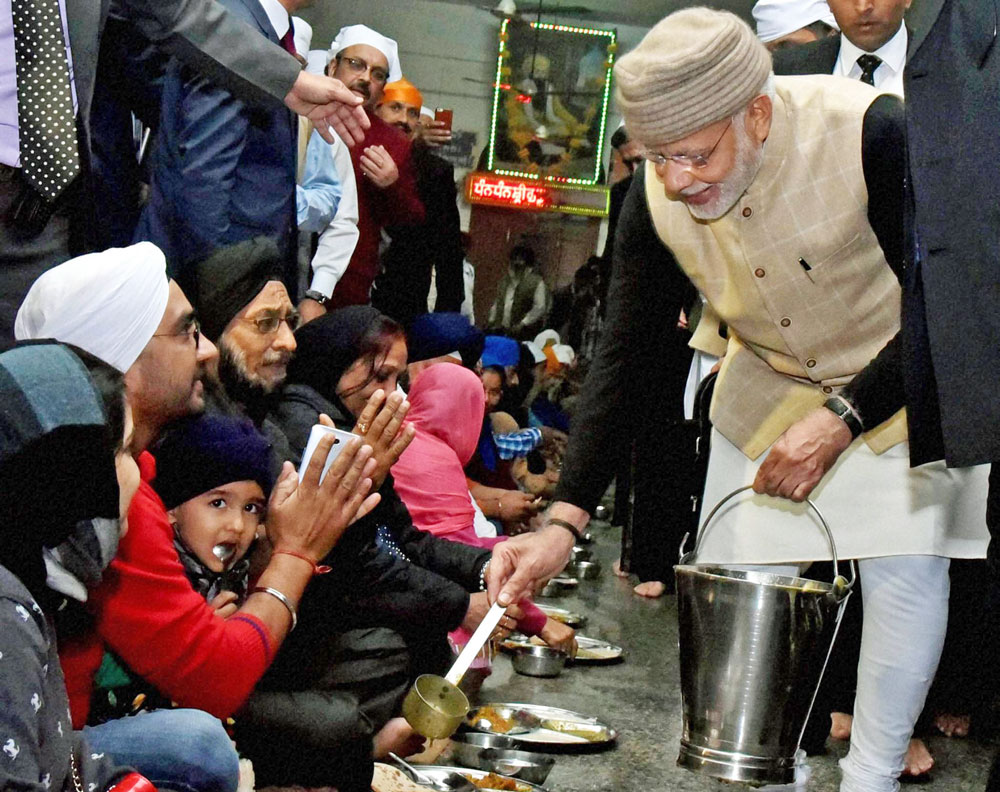
 The Sikh Langar tradition practiced before
On the normal days, 75,000 individuals eat a free meal here. Around 12,000 kilos of flour are utilized to make 2, 00,000 rotis for the Langar. More than 100 gas cylinders and 5,000 kilos of firewood are utilized to set up the supper. Everybody is welcome to share the Langar; nobody is turned away.
https://www.youtube.com/watch?v=ZtmNb-KJGC4
The benevolence and liberality of the volunteers at the Golden Temple demonstrates that not only is the delightful temple made of gold, but also the hearts of the devotees who come to worship here. The principle thought behind the idea of Langar is community dining, equality among individuals and the feelings of unity and sharing.
The Sikh Langar tradition practiced before
On the normal days, 75,000 individuals eat a free meal here. Around 12,000 kilos of flour are utilized to make 2, 00,000 rotis for the Langar. More than 100 gas cylinders and 5,000 kilos of firewood are utilized to set up the supper. Everybody is welcome to share the Langar; nobody is turned away.
https://www.youtube.com/watch?v=ZtmNb-KJGC4
The benevolence and liberality of the volunteers at the Golden Temple demonstrates that not only is the delightful temple made of gold, but also the hearts of the devotees who come to worship here. The principle thought behind the idea of Langar is community dining, equality among individuals and the feelings of unity and sharing.
 The ultimate Langar at the Golden Temple
Here are 10 facts you must know about the langar at the Golden Temple, the largest free kitchen all throughout the world-
The ultimate Langar at the Golden Temple
Here are 10 facts you must know about the langar at the Golden Temple, the largest free kitchen all throughout the world-
 Thousands of individuals sitting together to have the ultimate Langar feast
Thousands of individuals sitting together to have the ultimate Langar feast
 The Langar thali comprising of rice, roti, dal, and a vegetable dish
The Langar thali comprising of rice, roti, dal, and a vegetable dish
 The preparation, cooking, also the washing-up is done by the Volunteers or the Sewadaars
The preparation, cooking, also the washing-up is done by the Volunteers or the Sewadaars
 The food is prepared in huge utensils along with large hot plates
The food is prepared in huge utensils along with large hot plates
 The quantities of food for the whole Langar meal
The quantities of food for the whole Langar meal
 Large vessels for the free langar at the Golden Temple
Large vessels for the free langar at the Golden Temple
 The dirty dishes are washed 5 times before re-using it again
The dirty dishes are washed 5 times before re-using it again
 The roti making machine to make the roti faster
The roti making machine to make the roti faster
 The dining hall for having the Langar meal
The dining hall for having the Langar meal
 The kitchen getting a ton of donations
When you go to a Gurudwara to have the Langar, the minute you enter the langar hall and sit with individuals from all kinds of different backgrounds and you are served simple, yet top notch food cooked with devotion and love, it will all of a sudden strikes you that these are the small things which we ought to esteem the most in our lives, that is loving, sharing and maintaining peace. Going for an expensive hotel or restaurant does not give that sentiment of unity and fulfillment where a simple feast in a langar hall does!
The kitchen getting a ton of donations
When you go to a Gurudwara to have the Langar, the minute you enter the langar hall and sit with individuals from all kinds of different backgrounds and you are served simple, yet top notch food cooked with devotion and love, it will all of a sudden strikes you that these are the small things which we ought to esteem the most in our lives, that is loving, sharing and maintaining peace. Going for an expensive hotel or restaurant does not give that sentiment of unity and fulfillment where a simple feast in a langar hall does!